How to drum for EDM
The drummers who play with some of the UK's biggest live dance acts give us their tips
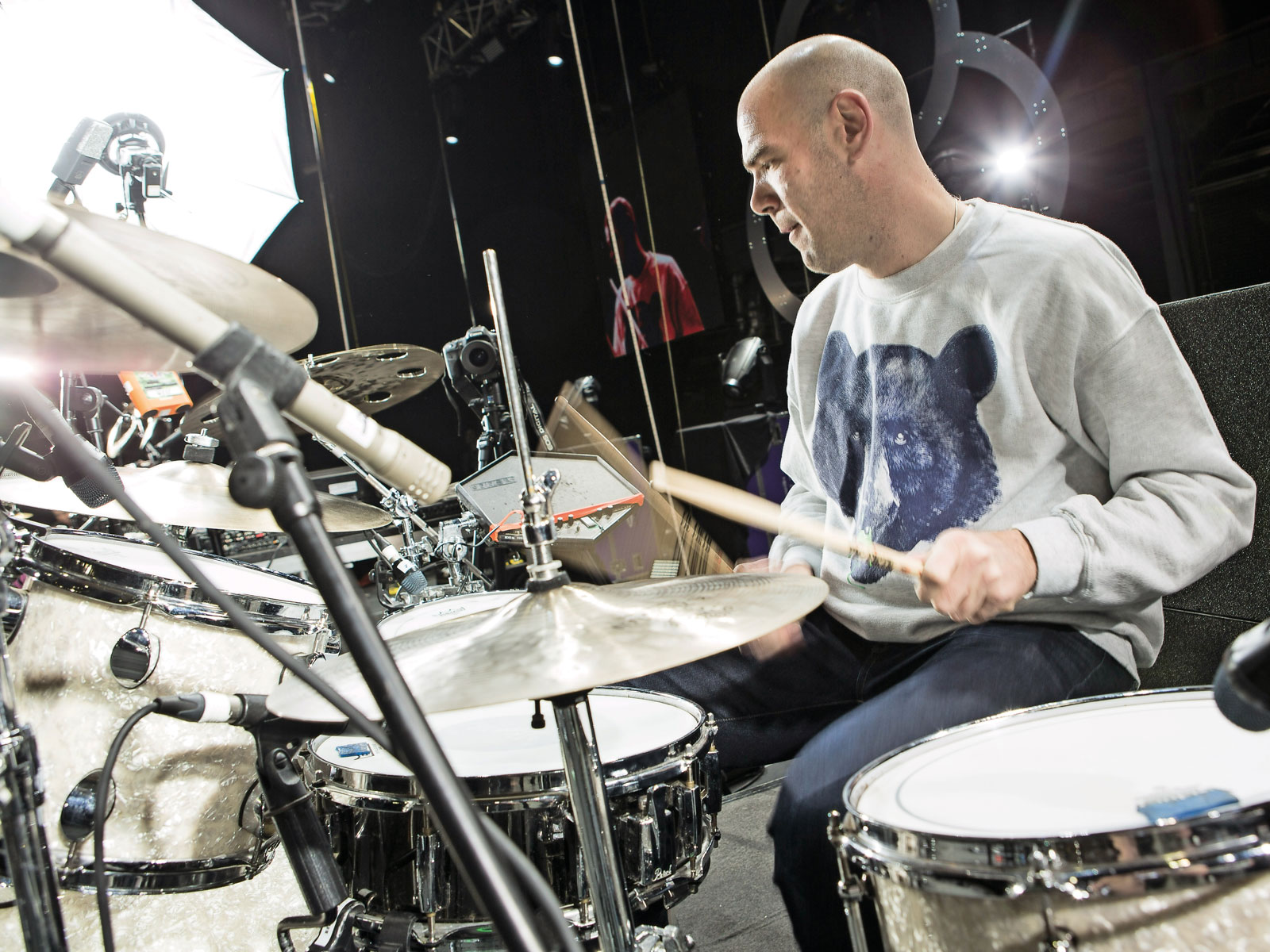
Nathan Curran
Nathan is one of the UK’s biggest live dance drummers, juggling gigs with the mighty Basement Jaxx and new EDM stars Gorgon City.
Working with the click…
“I worship the click. I think it is the most amazing thing and every drummer should play with it. If
they don’t play with a click then they’ll have problems in the future. I think using the click can
be very tribal. You can just go into a real mad one and switch beats around as long as you know where the ‘1’ is. I love the click. Playing dance music, you need to have that.”
Translating the feel of dance to the kit…
“It’s all triggers, it’s very simple but I added my own flavour where I’m doing a lot of cymbal work in between breakdowns. With Gorgon’s music, it’s a house beat all the way through but then you have to make it interesting with all the little side bits which are conga hits and weird rim sounds. Sometimes DJs take the bass drum out on the EQ, whereas with Gorgon you just take your foot off, you’re not doing that four-on-the-floor beat. You can have some real fun with it depending on how the crowd is. You can take them to a different level – if they need to go higher you can pump the kick more. You’re more in control because with Gorgon City there are no backing beats at all, it’s completely played, everything, all the beats, because that’s the way [Gorgon City MD] Andy Gangadeen wants it. He believes that if you get the right players we can do that. You don’t need to have a drummer playing on top of a backing track.”
The set-up…
“[Acoustically it’s] two cymbals, one hat, and two toms. That’s it. Everything else, kick, snare, rim shots, all that stuff, echoes of reverb congas, and the hi-hats are electronic. I’ve got electronic hi-hats on the bass drum, so I can chip away on the hi-hat on the left to give it a bit more tinsel. I use the other drums as filler.”
Here’s Tugg demonstrating what he plays on Basement Jaxx’s ‘Jump And Shout’
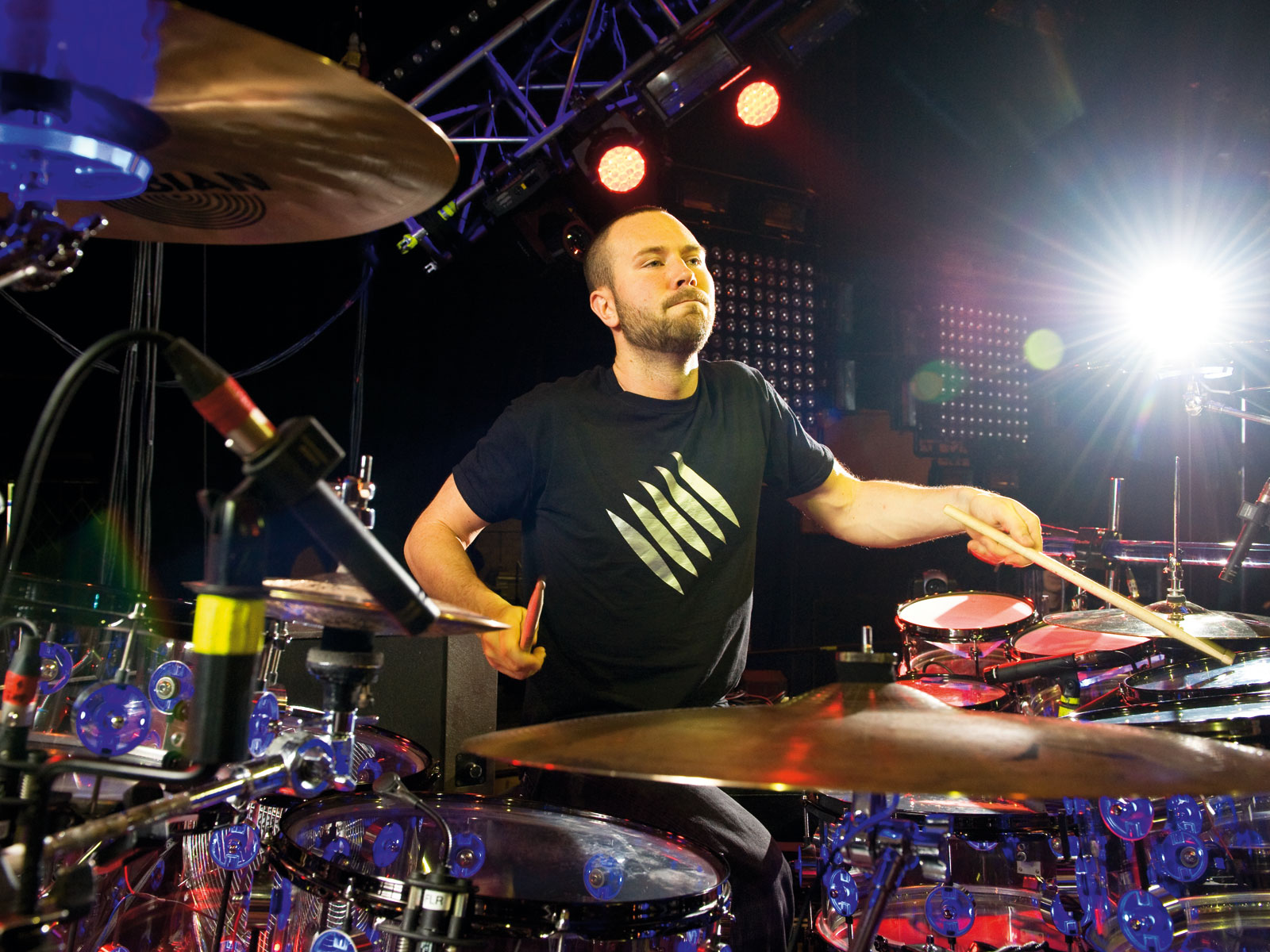
John Jenkins
As drummer and MD for a number of top pop and electronic dance music acts, including Example, The Streets and Lily Allen, John Jenkins is also one of the genre’s most technically astute players – fully au fait with running a full electronic show from behind his kit.
Inject some energy…
“We listen to a lot of dubstep before shows to get hyped up because it’s quite energetic and aggressive. It’s just about putting in what you think, but with the dance music don’t put too much in. Not all of this gig is dubstep and I tend to put some toms in in certain spaces. People need to know there’s a real kit on stage with this gig because a lot of this is weighted on the samples with the kick and the snare triggers.
Avoid chops…
“My fills on this are generally rock-led and very simple. I’d say steer away from any kind of chops at all. In terms of hi-hat work and stuff like that you can put more of that in, but bottom-end stuff, just leave it. Sonically, electronic music is already so full up, so there’s not a lot of room, frequency-wise. If you’re doing anything over 16th notes it’s not going to get picked up, it won’t translate and the crowd don’t care about it so keep it big, simple and epic! That’s the philosophy on this one.”
Find reliable triggers…
“The main thing that can go wrong is the acoustic triggers. I don’t know what’s happened, but my ddrum triggers keep breaking. We went through a load in rehearsal to find a pair that were solid. Once you find ones that work they last for a while. The lights on the kit work perfectly. We’ve had a couple of issues with the mixing desk, the Midas, but those things are massive computers now. There’s issues, but it’s been solid. We’ve got good people operating it so if there is ever an issue it’s spotted and dealt with.”
Bury the click…
“It’s all to click. It has to be. You don’t hear it after a while. That’s the secret. Where the click sits against the backing track is very important. I’ve been getting into how it works. You listen back to the recording and go into all the stems of the songs and you line the click track up with the bass drum obviously, but all the snares will be slightly off it depending on how it’s been recorded. Sometimes you need to shift it along so we’re playing along to a different part of the backing track.
“Once you get your body in sync with playing to the song the click is just there for you. It’s getting your body physically rolling or dancing to the beat. It’s like playing along with a record, but you have the precise reference if you need it.”
Here’s Johnny talking Rhythm through his Chequerplate LED set-up:
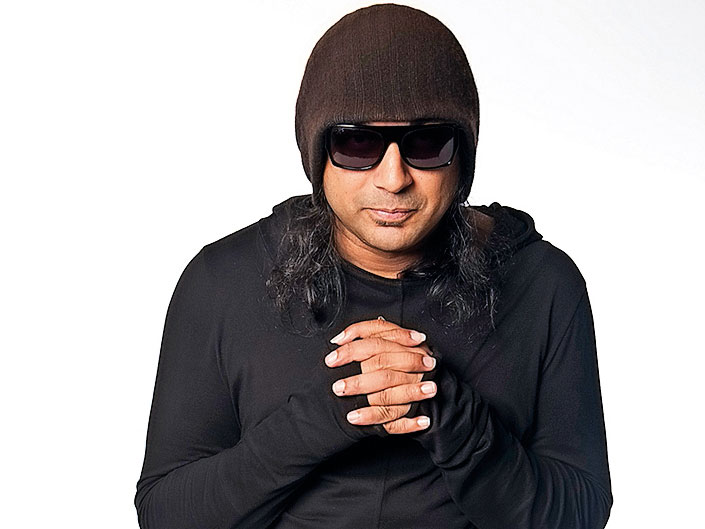
Andy Gangadeen
Andy Gangadeen has been a pioneer in presenting dance music in a live environment for 20 years with his company 101 Artists, which he describes as “all about the beats, it’s all about the production and the presentation of it and that’s what I do with all the acts I work with, to get that detail and that precision in the sound.”
Keep the electronic and acoustic distinct, physically and sonically…
“I never trigger off the kit because the kit should just sound like the kit. If you try to put the acoustic kick through a PA and layer it with a sample, you’d have to have the kick tuned the same every time because any discrepancy in the way the two things play, they’ll start phase-cancelling and the sound gets thinner, it doesn’t get fatter by layering it up. It’s much easier just to have the clean signals.”
Be consistent…
“Dance music is all about the beats so why not have a drummer playing the beats? It’s a very metrical way of approaching music and drumming, it’s not about the fills, it’s about consistency, being able to recreate the sounds on the record is key. You need that discipline, it’s a different approach but it’s one I’ve always championed and one I’m very passionate about.”
Here’s Andy explaining the science of playing live drum’n’bass loops.
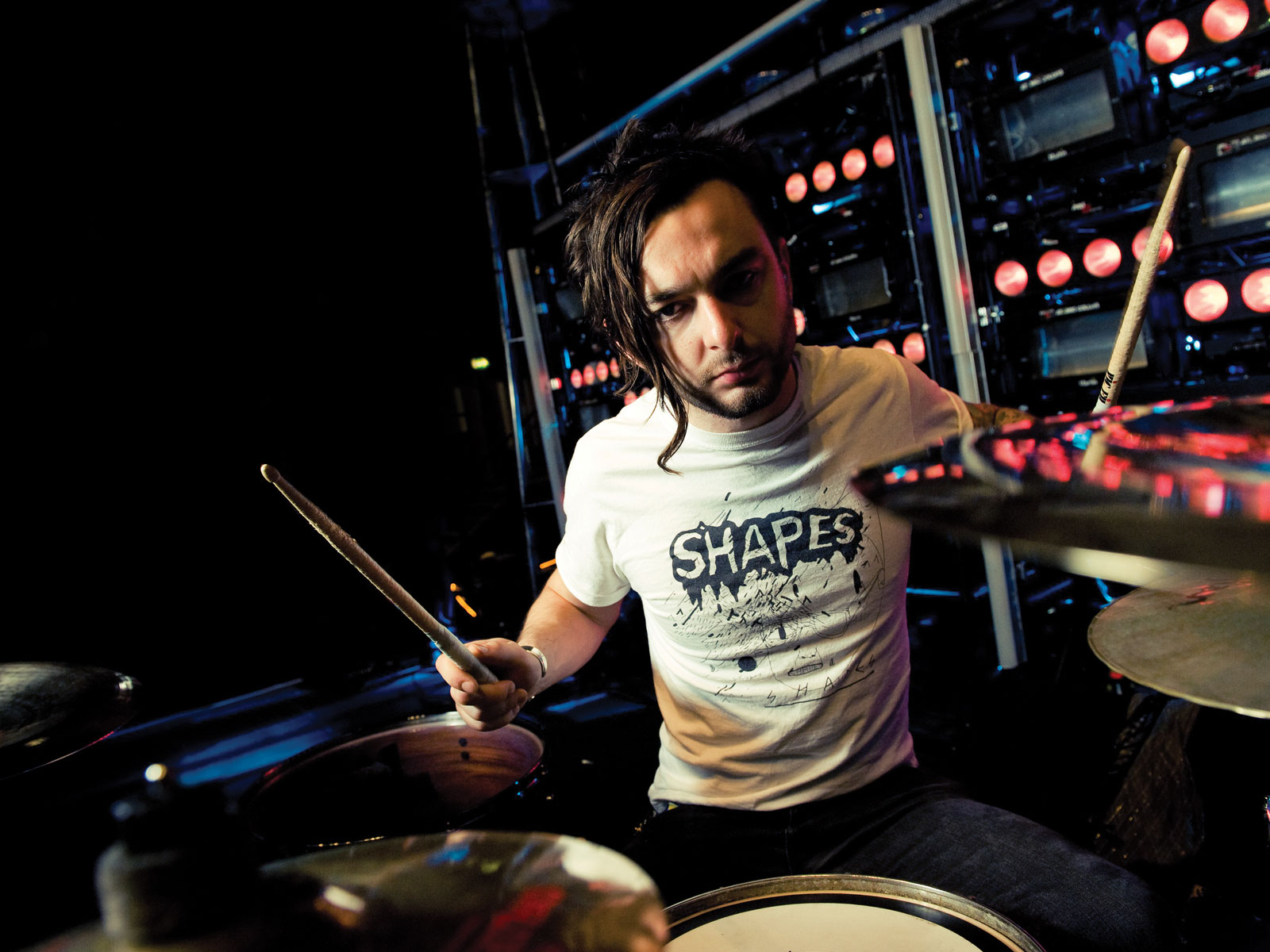
Leo Crabtree
Leo has been the Essex dance-crossover stars’ live drummer since 2007 and has developed into a vital part of the band’s live assualt, augmenting Liam Howlett’s intricate beats with his own shades of pulverising percussion.
Reinforce what's there…
“When he’s writing and developing songs, Liam often thinks of tracks in the live context. The recorded drums are an integral part of that. He has incredible perception of sound, how sound works and the drums are so intricately produced on the record. To have something come on top of that is odd in some ways. Live, the drums are there already, so what I’m doing is both reinforcing what's there, by laying a beat on top of existing parts, and ornamenting what’s happening. A lot of that is top end stuff, the cymbals, hi-hats and a lot of effects.
“On the snare break in ‘Breathe’, rather than play the same part I play a hi-hart part, to augment what’s already there. My main snare, a Tama 14"x8" G Maple, is tuned really low so it sits underneath Liam’s snares in the mix. It’s more of a bolster. The cymbals, the floors toms and the second snare are more audible, but they’re more of a reinforcement. That part in ‘Breathe’ is iconic so I augment it rather than copy it.”
Make interesting sounds…
“I really like effects cymbals, splashes, Zildjian’s Orientals and Oriental chinas, they’re really trashy, dirty, but I wanted to experiment so I went and spent an afternoon at my friend’s BMW garage, Fritz’s Bits in Somerset. He has racks and racks of crap, basically. I have some fly-wheels, old hub cabs and suspension parts, just to give a bit of a vibe, some dynamics.
Here are the Prodigy live in action in 2014:
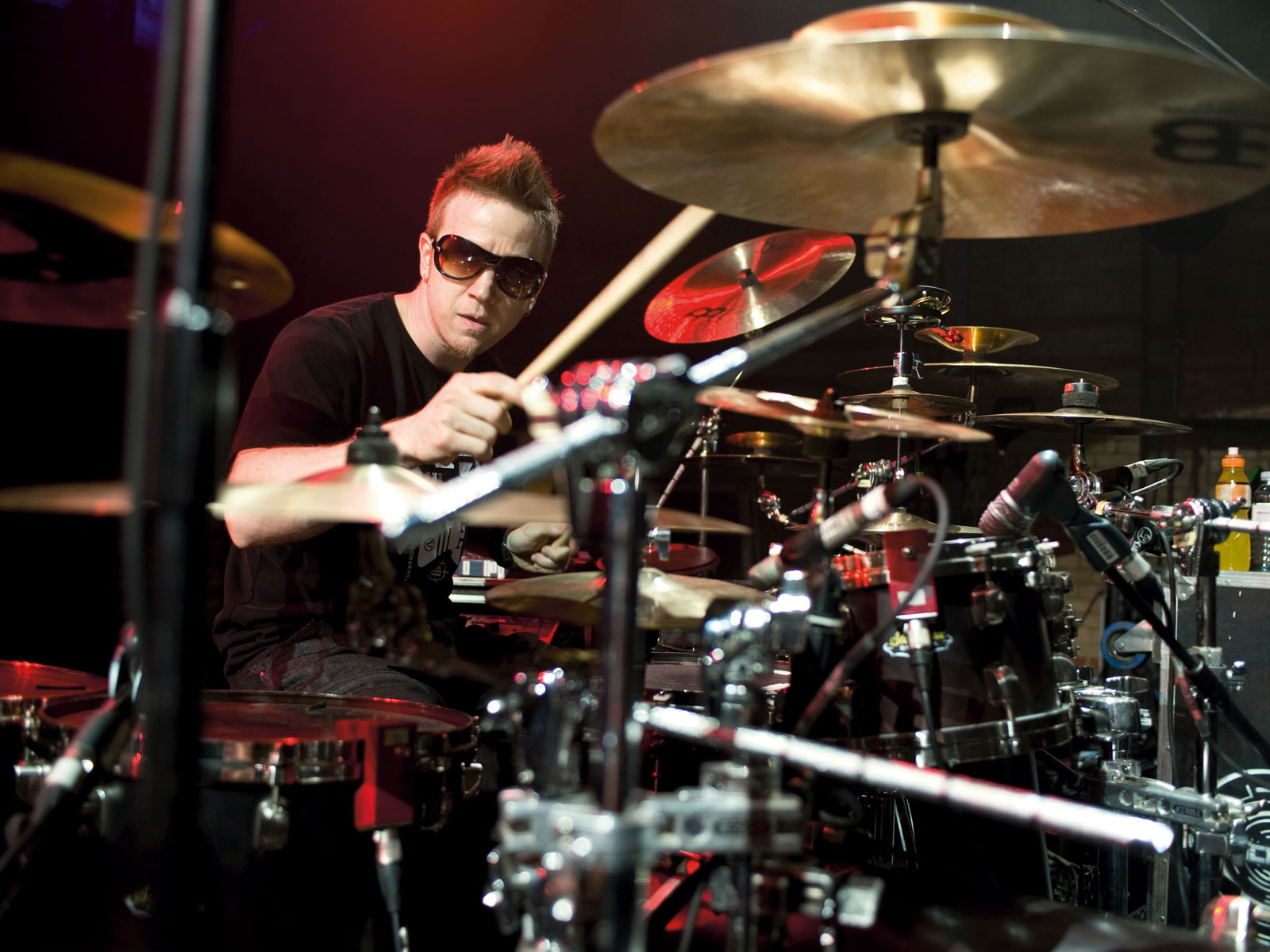
KJ Sawka
Kevin Sawka built himself quite the reputation thanks to his precise drum ’n’ bass rhythms and explosive YouTube clips, then in 2010 the man dubbed 'The Human Drum Machine’ joined Australia’s arena-filling dance/DnB crossover stars Pendulum.
Play like a rock drummer…
“Drumming perspective-wise, before Immersion (2010) it was mostly drum’n’bass and electronic orientated, except for In Silico (2008), which was rock but the beats were still very drum’n’bass. I came in prepared to give it very drum’n’bass beats. Then when I sat in the studio, miking up and tuning the kit, I asked what we wanted to capture, beat-wise, and Rob [Swire, Pendulum frontman] said, ‘Rock, just think rock, think Dave Grohl.’ For me that’s fine because I love Dave Grohl. I grew up listening to Nirvana, so hard rock and hitting really hard was definitely one of my fortes.”
Think about your gear…
“I use larger cymbals. Now I have 18" crashes. I’d never had 18" crashes before. I always played quick 14" crashes, really fast. Now I’m letting the kit breathe in a rock sense. Still there’s all of these quick things, I’ve got a quick set of hi-hats and a normal set too. Well, they’re 12", they’re still quick.”
Here are KJ’s tips on drum ’n’ bass:
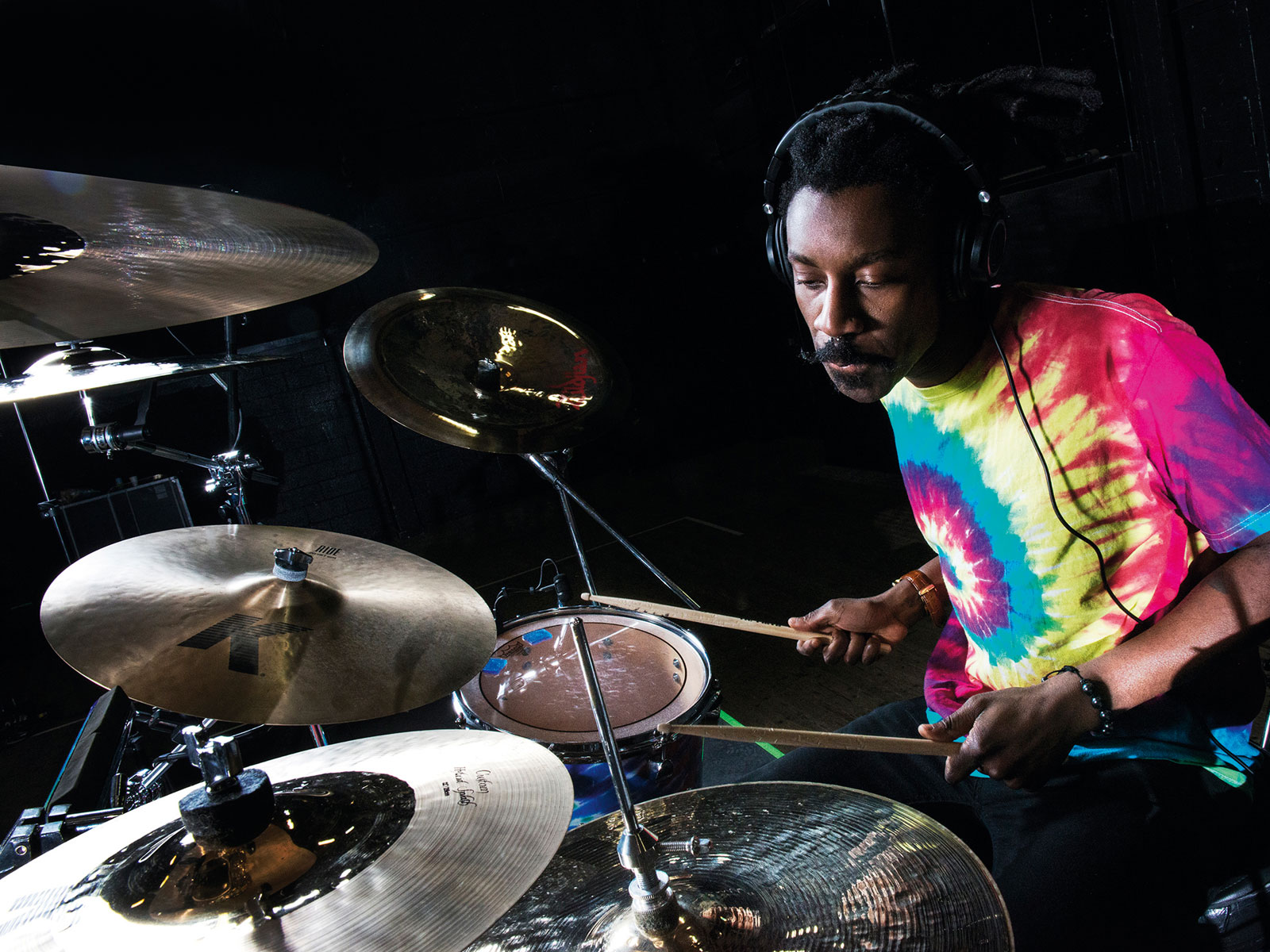
Beanie
Drum ’n’ bass collective Rudimental have had a string of hit singles in the UK including ‘Feel The Love’ and ‘Waiting All Night’. Rudimental are firmly rooted in the world of electronic dance music and they tour as a live act playing their music in real time. The man responsible for providing their rhythmically intense beats live is drummer Beanie.
Please the crowd…
“The love has been amazing. It gives you a lot of confidence. It’s hard work so it’s nice when someone goes, ‘You’re dope!’ Dance music is very popular in the UK but there aren’t many live dance drummers and two of them are part of Rudimental – myself and Andy Gangadeen. There are only a few of us doing live dance music so the reaction has been great.”
Jam but keep the beat…
“Some songs I play as parts that Andy and myself have come up with; some songs are just jam songs for me to improvise a bit and vibe off the trumpet player, Mark Crown, who’s fantastic. We’ll try to do something crazy complicated just for fun. Kezie Dryden [keys] does a lot of the bass lines so I’ll try to do something over the top just to catch his reaction, he cracks me up. There is lots of room to mess around but there are certain songs where I do the same drops. Fills are okay to mess around with but the electronic side of the beats stays the same.”
Be open minded…
“’ve always listened to a lot of different music. I play a lot experimental, free jazz stuff. I have a project called Noon and that’s with a guitarist called Adam Coney. We take a lot of influence from the New York scene, a lot of the free jazz noise improv stuff. Everyone plays in a different rhythm so it’s a bit like a Captain Beefheart/Lounge Lizards vibe. I do listen to a lot more dance music. When you get involved in that style of drumming and you enjoy it, you listen out for more stuff that sounds like it, so it’s not like I had to learn to like more dance music. I generally like it because I can hear more sounds in there that I’m replicating. There is an appreciation for the jungle beats a lot now as well because they’re lovely to play and I’m enjoying playing dance music so much that listening to it is a lot more enjoyable. I never used to be into House but now I can listen to House and enjoy it, not pretend to like it.”
Here’s Beanie in action with Rudimental at Glastonbury.
“I’m sorry I ruined your song!”: Mike Portnoy hears Taylor Swift's Shake It Off for the first time and plays along... with surprising results
“Nile's riff on Get Lucky is a classic example of a funk riff, where the second of each 16th-note duplet is slightly delayed”: Locking down the theory of groove
“I’m sorry I ruined your song!”: Mike Portnoy hears Taylor Swift's Shake It Off for the first time and plays along... with surprising results
“Nile's riff on Get Lucky is a classic example of a funk riff, where the second of each 16th-note duplet is slightly delayed”: Locking down the theory of groove









